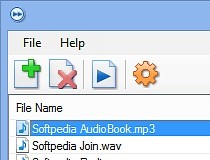
The atempo filter is limited to using values between 0.5 and 100.0 (so it can slow it down to no less than half the original speed, and speed up to no more than 100x the input).

To double the speed of audio:įfmpeg -i input.mkv -filter:a "atempo=2.0" -vn output.mkv You can speed up or slow down audio with the atempo audio filter. Other options include slowmoVideo and Butterflow. This is also known as "motion interpolation" or "optical flow".įfmpeg -i input.mkv -filter:v "minterpolate='mi_mode=mci:mc_mode=aobmc:vsbmc=1:fps=120'" output.mkv You can smooth out slow/fast video with the minterpolate video filter. To slow down your video, you have to use a multiplier greater than 1:įfmpeg -i input.mkv -filter:v "setpts=2.0*PTS" output.mkv For example, to go from an input of 4 FPS to one that is sped up to 4x that (16 FPS):įfmpeg -i input.mkv -r 16 -filter:v "setpts=0.25*PTS" output.mkv You can avoid dropped frames by specifying a higher output frame rate than the input. Note that this method will drop frames to achieve the desired speed. For example, if there are two succesive frames shown at timestamps 1 and 2, and you want to speed up the video, those timestamps need to become 0.5 and 1, respectively. The filter works by changing the presentation timestamp (PTS) of each video frame. To double the speed of the video with the setpts filter, you can use:įfmpeg -i input.mkv -filter:v "setpts=0.5*PTS" output.mkv Then generate new timestamps while muxing to a container:įfmpeg -fflags +genpts -r 30 -i raw.h264 -c:v copy output.mp4Ĭhange the value of -r to the desired playback frame rate. Use this if you require no other changes to your input video.įirst, copy the video to a raw bitstream format.įfmpeg -i input.mp4 -map 0:v -c:v copy -bsf:v h264_mp4toannexb raw.h264įfmpeg -i input.mp4 -map 0:v -c:v copy -bsf:v hevc_mp4toannexb raw.h265 This method is lossless and apart from changing the timestamps, copies the video stream as-is. Note that in the following examples, the audio stream is not changed, so it should ideally be disabled with -an. This can be done via two methods: using the setpts video filter (which requires re-encoding) or by erasing the timestamps by exporting the video to a raw bitstream format and muxing to a container while creating new timestamps.
#Mp4 speed changer how to
Thanks to its intuitive layout and overall simplicity, first-time users should quickly figure out how to work with MP3 Speed Changer.The speed of a video stream can be changed by changing the presentation timestamp (PTS) of each video frame. No error dialogs have been shown throughout our evaluation and the utility did not hang or crash. It is very responsive to commands and carries out a task rapidly while preserving quality audio stream. MP3 Speed Changer has a minimum impact on the system resources, running on a low amount of CPU and RAM.

append tempo information) and preview length (in seconds). Other options of MP3 Speed Changer let you preview songs in a built-in audio player, remove files from the list, as well as modify the sound quality, output file name pattern (e.g. By moving two sliders on the bottom part of the panel, you can adjust the tempo and speech levels, or just input the values in the dedicated boxes directly.Īs for the location of the new items, these can be either saved to the same directory as the source tracks, or to a custom one. The list displays the name, length and status for each item. Its GUI is based on a single window where you can load audio tracks using either the file browser or drag-and-drop support. The utility features a batch processing mode and a clean and straightforward interface to help you carry out tasks smoothly. It supports other sound extensions as well, such as WMA, OGG, APE and FLAC. As the name suggests, MP3 Speed Changer enables you to adjust the speed of audio tracks with the MP3 format.


 0 kommentar(er)
0 kommentar(er)
